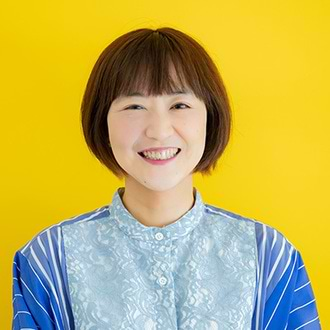
Fumiko Ishida
Dentsu Inc.

Mitsuhiro Kutsukake
Dentsu Inc.
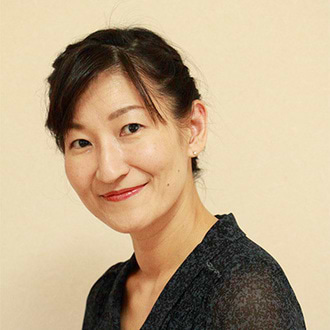
Yoriko Okamoto
Rissho University
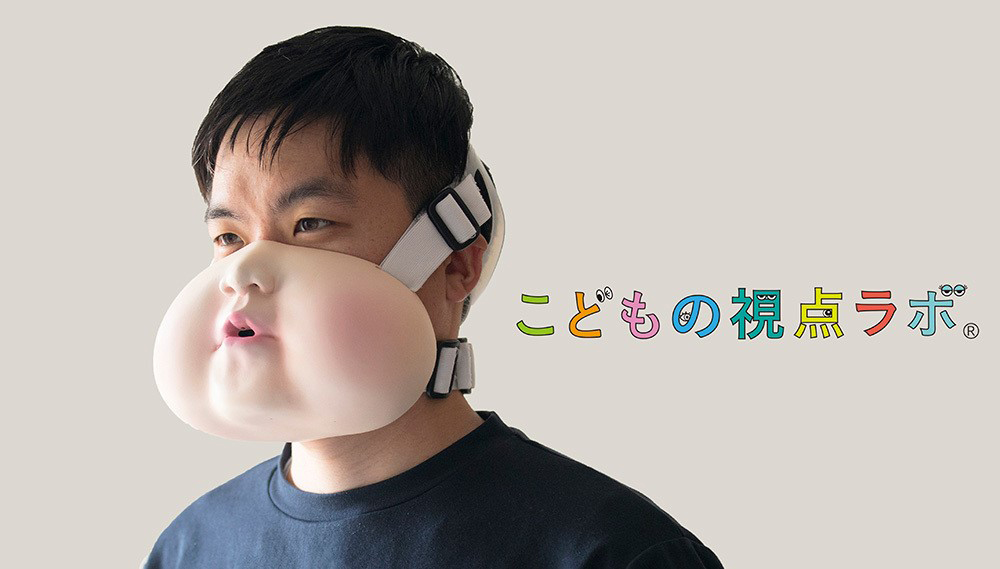
“Why won't she stop crying?” I don't understand how babies feel.
I'd fed him, changed his diaper, and held him in my arms, but he wouldn’t stop crying no matter how long I tried to rock him or take him for a walk. Despite being a parent, I had no idea how the baby was feeling, which was bringing me to the verge of tears. I am sure there are many new mothers and fathers who have had the same experience. I did end up crying out loud, more than once or twice.
But as my child grew up and became capable of verbal communication, it occurred to me. For babies who can't talk yet, crying is the only way to communicate. How would it feel to have no way to complain other than to cry, whether your diaper is uncomfortable, you are thirsty, or your soles are itchy? Thus, the "Child's Perspective Lab," which is dedicated to deepening our understanding of children by putting us in their shoes, created "Baby Voice," a device that converts all spoken words into crying, in order to let adults experience how babies feel.
First, we asked Ryonosuke Ono, a creative technologist, to build the internal device. A single-board computer about the size of a business card, with an entry-level CPU, was fitted with a small microphone to detect the volume of the user's voice. It was programmed to emit a baby’s voice from the speakers whenever the volume exceeds a certain value.
This was brought to Spatial Arts and set in a mold of a baby's mouth. The position of the speaker and the volume of the baby's cries were adjusted. Finally, the project neared completion.
However, as the project progressed, I had a question. Do babies' cries change depending on their emotions? If we could distinguish between them, wouldn't it be easier for the parents to understand what the baby wants?
Thus, Fumiko Ishida and Mitsuhiro Kutsukake of Kodomo no Shiten Lab decided to talk to Professor Yoriko Okamoto of Rissho University, who has been studying parent-child communication for over 20 years.
Babies cry when they are bored
Ishida: Professor, here is the Baby Voice device we are developing.
Prof. Okamoto: That's such an interesting experiment! I want to try it out. Please let me test it when it is complete.
Ishida: Of course! By the way, Prof. Okamoto, we are wondering whether we should change the crying voice according to the baby’s emotions or not, and how we could achieve this. Is it possible to distinguish a baby's voice according to emotion? I could not tell from my child's crying at all.
Prof. Okamoto: There have been medical and speech analysis studies on babies' cries in an attempt to classify them, and we know that there are phonological characteristics in situations where the cause of crying is clearly different (*1). In reality, however, since there are multiple reasons for crying, such as sleepiness or hunger, and they vary in degree, there may not be enough of a difference for people to be able to distinguish between them.
*1
Reference: Arakawa, Kaoru (2007). Quantitative Analysis of Infant Cries and Estimation of the Cause of Crying. Fundamentals Review, Fundamental and Boundary Society of IEICE, 1(2), 21-25.
Many parents I have met during the course of my surveys and other studies also say that they cannot tell from the sound of a baby's voice alone. Do you know what parents do first when their babies start crying? They glance at the clock. Is it time to feed her? Oh, maybe it's her diapers because it's still early. They guess.
Babies, especially those up to three months old, have immature throat structures, so their voices are weak, similar to the nasal sounds made as air escapes through the nose. Their abdominal muscles are also immature, so their voices are not very loud. It is difficult to clearly distinguish their cries from each other in terms of developmental stage. Therefore, in our research (*2), we started to study babies from 5 to 6 months of age, when they are a little older, in order to distinguish their cries.
*2
Reference: Yoriko Okamoto and Yukie Kanno, 2008. Developmental Psychology of Parents and Children, Shinyosha
Kutsukake: I see. Another question: Do the reasons for crying change with the age of the child?
Prof. Okamoto: Well, in a sense they do, but they largely stay the same. They can include hunger, sleepiness, pain, heat, and boredom.
Kutsukake: Oh, so babies cry when they are bored?
Prof. Okamoto: Yes. Humans are born with an intellectual curiosity, so they cry if they are bored. Some researchers (*3) say that children start crying when they are three weeks old. Babies cry to be cared for and to call for attention. However, research on babies is difficult, and it is impossible to ask the babies themselves if this is true or not.
*3
Reference: Wolff, P.H. (1969). The natural history of crying and other vocalizations in early infancy. In Foss, B. M. (Ed.). Determinants of infant behavior IV. London; Methuen.
Ishida: Indeed.
Prof. Okamoto: What is often overlooked with the first child is heat and cold. Babies have a high body temperature, but adults, who have a lower body temperature than babies and are better at temperature regulation, tend to dress them too warmly out of concern. When I visit parents and children with their first child, it is not uncommon to find that the baby is bright red in the face because of this.
Ishida: I know exactly what you mean. I was so anxious that I dressed my baby thickly, and after a few months, I realized that I may have made a mistake. By the way, there is something else I wish I had known earlier. You mentioned that there is a "peak crying period" when the baby won't stop crying no matter what you do.
Prof. Okamoto: It's true that sometimes, there’s simply nothing we can do. I often hear stories of babies who have been sleeping well since birth, but who then start to cry at dusk or twilight, and I can’t help but wonder why. Although I have not collected data on this, I have found that when baby care becomes routine, the evening is a time when adults tend to be busy with other things besides the baby, such as preparing dinner and taking care of chores, so babies may want more attention then. Also, since babies grow much faster than adults expect, it may be that the amount of milk that was just right yesterday is no longer adequate.
Kutsukake: In the end, we just have to guess and try to deal with the situation, huh?
Prof. Okamoto: That's right. But the first thing I would like to say to distressed mothers and fathers is that it is normal not to know the reason why your baby is crying. Being worried that you don't understand is a sign that you are trying to understand, which is the mark of a good parent.
Ishida: If I had heard your kind words when I was holding my baby in the middle of the night, I would have broken down in tears. I still feel a little like crying even now.
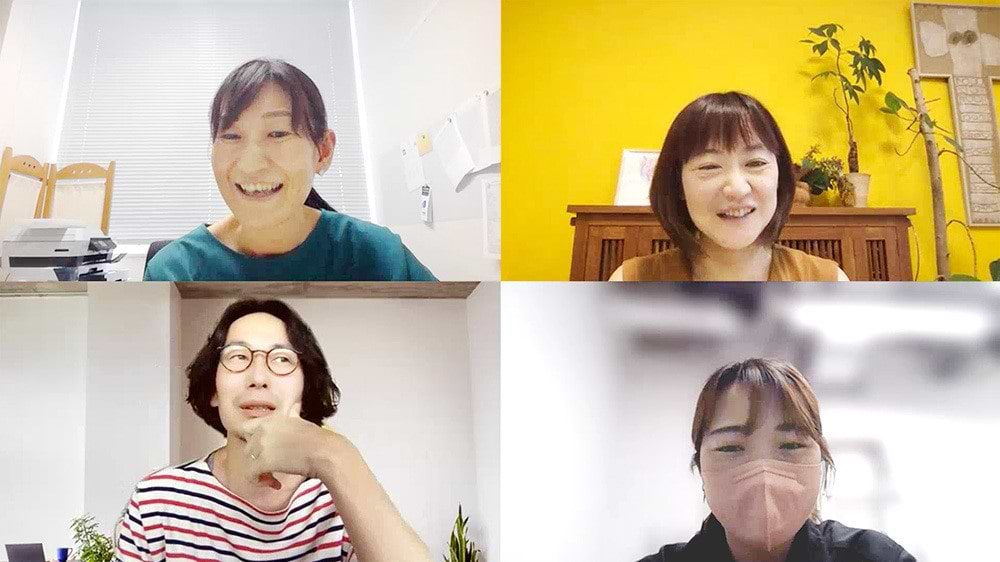
Babies are not born a blank slate. They have their own temperament!
Ishida: My son would start crying as soon as I put him down. But some babies are in a good mood when put down. There is such a thing as a natural disposition, isn't there?
Prof. Okamoto: Yes, there is. Babies are not born a blank slate; they are born with a natural temperament. Temperament is present at the time of birth, and as it develops, environmental factors come into play and transform it into a personality. There are various ways to divide them, but there are three well-known types (*4).
*4
Reference: Thomas, A. & Chess, S. (1986). The New York longitudinal study: From infancy to early adult life. In Plomin, R. & Dunn, J. (Eds.) The study of temperament; Changes, continuities, and challenges. Lawrence Erlbaum Associates, Inc.
The first is the easy baby, who is easy to handle, easy to raise, cries for milk, and sleeps when her tummy is full; the second is the difficult baby, who is difficult to handle, difficult to raise, and sensitive to anything, being fussy when her tummy is full or crying when she is put down. The third is the slow-to-warm-up baby, who reacts slowly to stimuli. Of course, these are just temperaments, and personalities change depending on how they are raised and the various encounters they have with others.
Ishida: Just knowing that there are such temperaments makes parents feel better. If I had known that, I wouldn't have worried it was my fault the baby cried all the time.
Prof. Okamoto: If you are at a loss for how to deal with your baby, I recommend you act as a “representative.” (*5).
*5
Reference: Okamoto, Yoriko (2016). Transition from pregnancy to parenthood: Parents developing through parent-child interactions. Shinyosha.
Kutsukake: Do you mean representing the baby's feelings?
Prof. Okamoto: Yes. For example, when a mother feeds her baby, she says, “Are you full? Yes, I'm full,” and so on, right? She asks the question, even though she knows the baby won't answer. By playing both roles, the mother can take a break and say, “Let's leave it at that.” Then she can move on to the next task.
Kutsukake: I see. So you convince yourself.
Prof. Okamoto: That's right. Actually, this is something that many parents do naturally. It is normal to feel anxious about being with a baby that cannot talk. In the first place, it is not uncommon for parents not to know what to do while with their babies. Singing songs is a good idea. It does fill the time, right?
Ishida: Yes! I used to sing all the time while walking around with the baby in my arms, but now I feel like it was for my own sake, to fill the time.
Prof. Okamoto: Singing or speaking for babies makes parents feel better. I would say, "Did you want me to hold you? Yes, I wanted you to rock me," "I'm sleepy, I'm sleepy, I'm sleepy," etc. If you do this, you will gradually become better at catching the baby's facial expressions and actions, and your understanding of the baby will also improve. Thus, you will learn how to better relate to the child.
Ishida: That's interesting! I think I'm beginning to understand a little more about how to communicate with babies. Thank you very much, Professor!
New mothers and fathers experience Baby Voice
Since it is difficult to distinguish a baby's voice according to emotion, we designed Baby Voice to randomly emit baby cries in response to speech. With the completed product at hand, we decided to make a video of the experience by filming moms and dads.
The cooperation of the Matsuura family was very much appreciated. Their daughter, Itoha, is 6 months old. Holding the actual Baby Voice in their hands, they commented, “It looks like a peach!” First, we asked Tsunehiro to talk to his wife, Marika, while wearing the device. Can she understand his feelings?
“Waah, waah waah!!” (It's so hot, go get the remote control for the air conditioner!)
“Do you want something to drink? Do you want some water? No?”
“Waah, waah waah!!” (No, get the remote control for the air conditioner!)
"This? Do you want this? No? Oh, you want to pee?"
She took her husband to the bathroom, but he did not seem to want to go to the bathroom. She did not get it at all, and some time passed with his cries echoing throughout the room. Next, we asked Marika to put it on.
"Gyaa-gyaah!!” (I want some tea!)
“Ah, okay, I want to eat something. You want to eat? Oh, no?"
"Gyaah, gyaah, gyaaaaahh!!” (No, I want some tea.)
He brought her tissues, the remote, and other things one after another, but they were not what she wanted. He tried everything, but nothing seemed to work.
"Are you sleepy? Do you want to go to bed? Why don't you go to bed?”
Time was running out, and as the end of the session approached, he said,
"Oh, tea! Could it tea?”
Tsunehiro poured a cup of tea and brought it to her. The crying stopped. He got the message! The site of the filming was filled with emotion. How difficult it is to communicate by crying!
“When I actually experienced it, I was surprised at just how difficult it was to communicate. I realized I shouldn't get frustrated just because I don't understand why they are crying. I should instead make an effort to understand,” said Tsunehiro.
“I realized that there might be discomforts other than just diapers, milk, and sleepiness. I thought I would like to try doing more from now on," said Marika. Although babies can only cry, we were able to make the two realize they have feelings they want to convey to us.
Click here to watch a video of the experience of three pairs of people we interviewed, including a pre-mom and dad and the parents of a one-year-old.
Here is a summary of what we learned from this research.
- It is normal to not know why your baby is crying. We should know that besides diaper discomfort, hunger, drowsiness, and temperature, they may also cry because they are bored.
- Babies have a natural temperament. For example, easy babies, difficult babies, and slow-to-warm-up babies. Most babies are difficult, so avoid worrying excessively about how to take care of them.
- If you have trouble spending time with your baby, try “representing” your baby by saying, "Are you hungry? Yes, I am.” “Are you sleepy? Yes, I am.” By observing the baby's condition and playing both roles, you will gradually learn how to interact with the baby.
By wearing Baby Voice, I was able to realize how frustrating it is to have no other way to communicate than by crying. Maybe telling a baby not to cry is similar to telling an adult not to speak. It would be better if we could think of their crying as them trying their best to communicate and not worry too much about whether we should let them cry or not.
The "Child’s Perspective Exhibition," a hands-on exhibit that also showcased our Baby Voice, concluded successfully. It was well received and saw over 15,000 visitors. We have received many requests to hold it in other prefectures as well. We welcome inquiries from local governments, museums, commercial facilities, and companies for traveling exhibitions in their exhibition spaces, etc. Please feel free to contact us at the Dentsu website and the Contact Us page below.
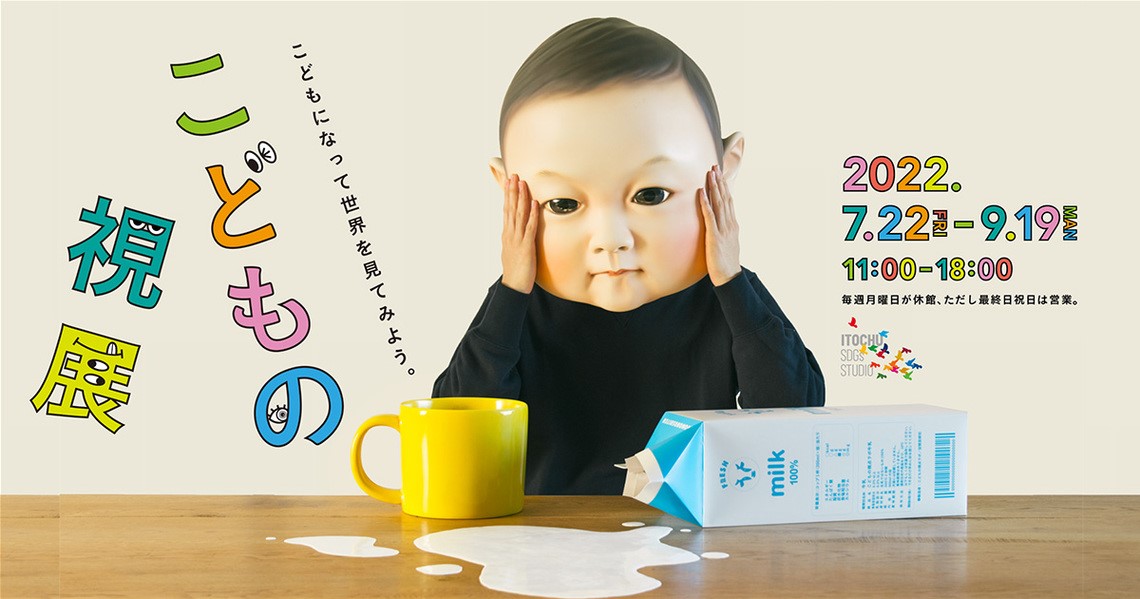
Related Link
[Child's Perspective Lab] Using Baby Voice, I Cried Like a Baby. (Japanese language only)
